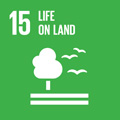- Docente: Stefano Benazzi
- Credits: 6
- SSD: BIO/08
- Language: Italian
- Teaching Mode: In-person learning (entirely or partially)
- Campus: Ravenna
- Corso: First cycle degree programme (L) in Cultural Heritage (cod. 9076)
Learning outcomes
The course aims to provide basic information about human origin and biocultural evolution based on the study of the human fossil record and the different contexts the fossils were retrieved. At the end of the course, students will acquire fundamental knowledge to interpret, from an evolutionary perspective, the human fossil record, and he/she will be able to place those fossils in a proper chronological, environmental, ecological and archaeological context. Ultimately, the student will be able to suggest potential scenarios that underpin the different phases of human evolution, the origin and worldwide diffusion of humankind today.
Course contents
The first part of the course deals with the principles of evolutionary biology, as well as fossilization processes and dating methods. The second part involves the study of human evolution from a biological and, to a lesser extent, cultural point of view. The specific course topics are as follows:
Contents and methods of Paleoanthropology: Paleoanthropology as a branch of Physical Anthropology; history of the evolutionary thought; Darwin's evolutionary theory and the synthetic theory of evolution; principles of evolutionary biology; micro- and macroevolutionary mechanisms and speciation processes; fossils and fossilization processes; relative and absolute dating techniques; introduction to skeletal system anatomy.
Primates: the order Primates; general morphological traits and classification of Primates; morpho-anatomical and functional modifications of the masticatory apparatus, locomotor apparatus and posture; chronological and paleogeographical context of primate evolution; Primate paleontology and phylogeny.
Hominins: The environment during the late Miocene, Pliocene and Pleistocene; early potential hominins; australopithecus; paranthropus; bipedalism; anatomical changes related to bipedal locomotion; paleontological evidence of bipedal locomotion; hypothesis about the evolution of bipedalism.
Homo: the rise of the genus Homo; Homo ergaster/erectus; earliest Homo out of Africa; earliest peopling of Europe; Homo heidelbergensis; Homo neanderthalensis; Denisova; Homo floresiensis; Homo naledi; emergence and dispersal of Homo sapiens out of Africa in Eurasia, Australia and America.
Readings/Bibliography
- Slides of the lessons
- A scientific article on a topic of the course chosen by the student
- The following chapters from the "MANUALE DI ANTROPOLOGIA - EVOLUZIONE E BIODIVERSITÀ UMANA. A cura di Luca Sineo e Jacopo Moggi Cecchi. UTET 2022":
Capitolo 2.1 – Anatomia scheletrica e dentaria
Capitolo 2.2 – Morfologia funzionale dello scheletro
Capitolo 2.6 – Metodi di datazione
Capitolo 2.7 – L’utilizzo degli isotopi stabili in antropologia
Capitolo 2.8 – Analisi stratigrafica
Capitolo 2.9 – Industrie litiche e altri manufatti
Capitolo 2.10 – Il Quaternario: cronologia, suddivisioni e terminologia
Capitolo 3.1 – Biologia scheletrica: la sfida della variabilità
Sezione 4 – Ecologia, Sistematica ed evoluzione dell’Ordine dei Primati
Capitolo 4.1 – L’Ordine dei Primati
Capitolo 4.2 – Biogeografia e Sistematica
Capitolo 4.3 – Origine dei Primati
Capitolo 4.4 – Etologia umana
Sezione 5 – Evoluzione umana
Capitolo 5.1 – La divergenza tra uomo e grandi scimmie antropomorfe e l’orologio molecolare. I più antichi Ominini
Capitolo 5.2 – Ominini Pliocenici. Gli Australopiteci
Capitolo 5.3 – Cambiamenti climatici ed evoluzione umana: il bivio adattativo Paranthropus e Homo
Capitolo 5.4 – Il Paleolitico
Capitolo 5.5 – Encefalizzazione
Capitolo 5.6 – Il genere « Homo » nel Pleistocene inferiore
Capitolo 5.7 – Il genere Homo nel Pleistocene Medio
Capitolo 5.8 – Il genere « Homo » nel Pleistocene superiore
Capitolo 5.9 – Ricostruzione delle origini e delle diffusioni di Homo sapiens: il contributo della paleogenetica
Capitolo 6.4 – Il popolamento dei continenti e le mappe della diversità umana
Optional:
- Robert Jurmain, Lynn Kilgore, Wenda Trevathan, Russell L. Ciochon, Eric Bartelink. Introduction to Physical Anthropology. 15 Edition. Cengage Learning, Boston (USA), 2018.
- Romagnoli F, Rivals F, Benazzi S (Eds). Updating Neanderthals - Understanding Behavioural Complexity in the Late Middle Palaeolithic. Elsevier Academic Press, 2022
Teaching methods
The course consists of frontal lectures related to the topics of the programme that can be supplemented by seminars on specific topics. During the course PowerPoint presentations will be used, which will be supplied to the students by means of dedicated online platforms. Osteological remains and archaeological artefacts might be used during the lessons to support teaching.
Students who are affected by learning disability (DSA) and in need of special strategies to compensate it, are kindly requested to contact the Teacher, in order to be referred to the colleagues in charge and get proper advice and instructions.
Assessment methods
The final exam consists in an oral examination, which can be sustained starting from the first useful session on the calendar after the end of the lessons, concerning the topics indicated in the course programme. During the exam, the student will have to deal with a topic of the course that she/he will have particularly deepened through the reading of a scientific article chosen by the student, which will obviously be followed by verification of preparation on other topics of the program.
The final grade will depend not only on the degree of scientific and methodological in-depth study of the topics covered, but also on the language properties of the student and on the ability to sustain a critical, reasoned analysis, with possible interdisciplinary connections.
Non-attending students. The course programme is the same for both attending and non-attending students. Attendance of the lessons is highly recommended given the nature of the course, however, students who for valid reasons cannot attend are invited to contact the teacher, during reception hours, for the suggestion of the necessary supplementary texts.Teaching tools
Power Point slides and osteological remains will be used during the lessons.
Students who are affected by learning disability (DSA) and in need of special strategies to compensate it, are kindly requested to contact the Teacher, in order to be referred to the colleagues in charge and get proper advice and instructions.
Office hours
See the website of Stefano Benazzi
SDGs


This teaching activity contributes to the achievement of the Sustainable Development Goals of the UN 2030 Agenda.
